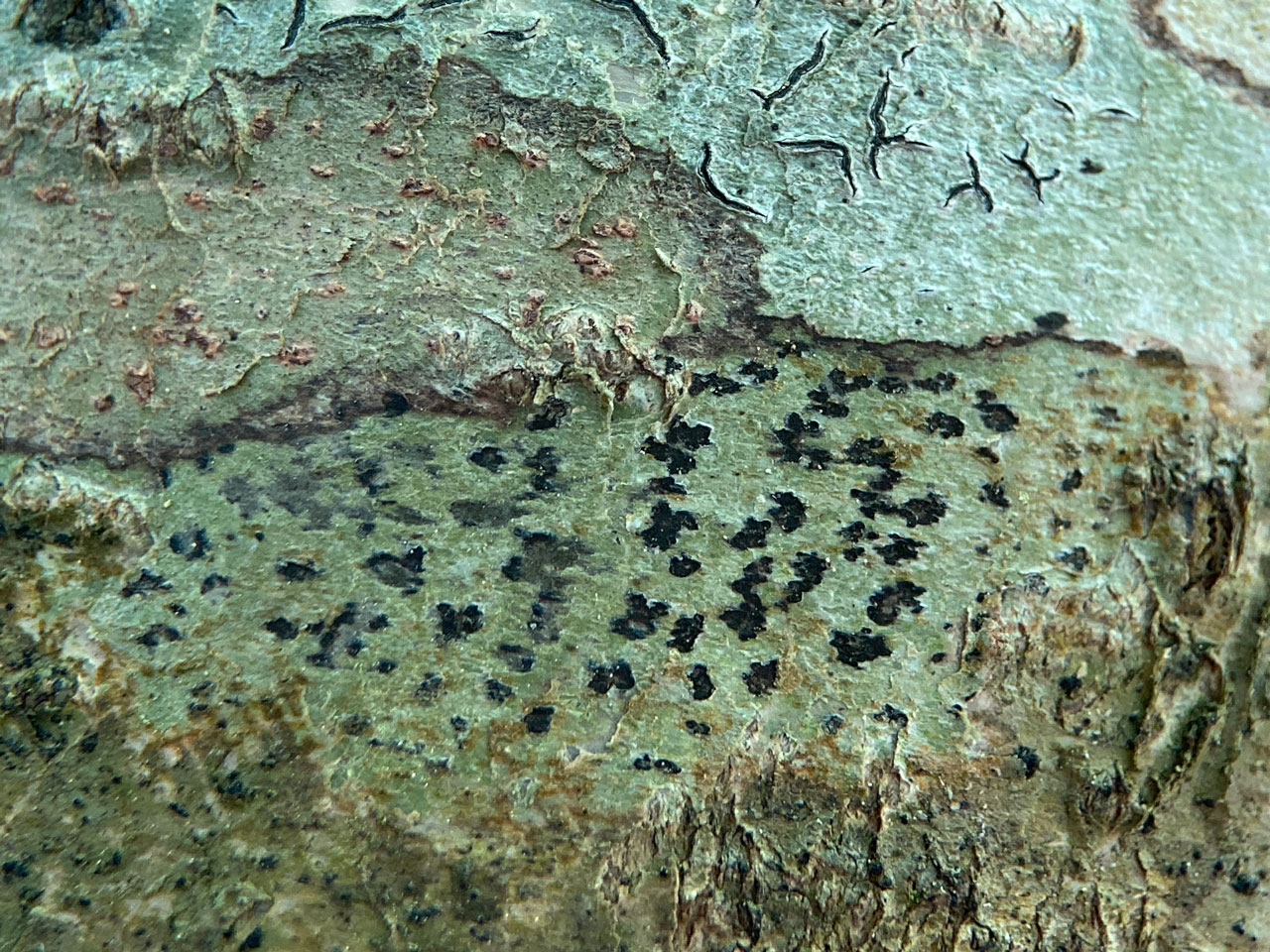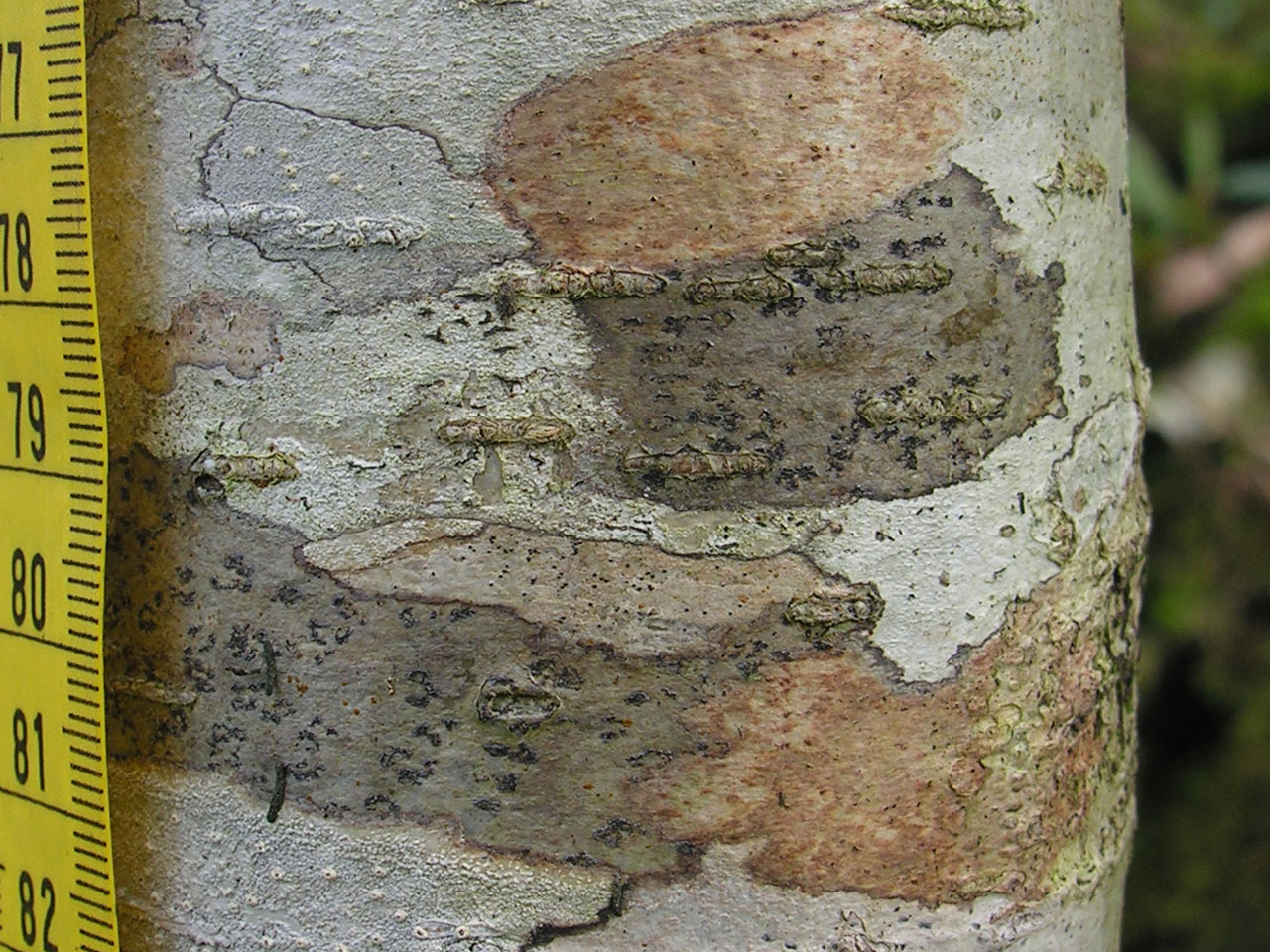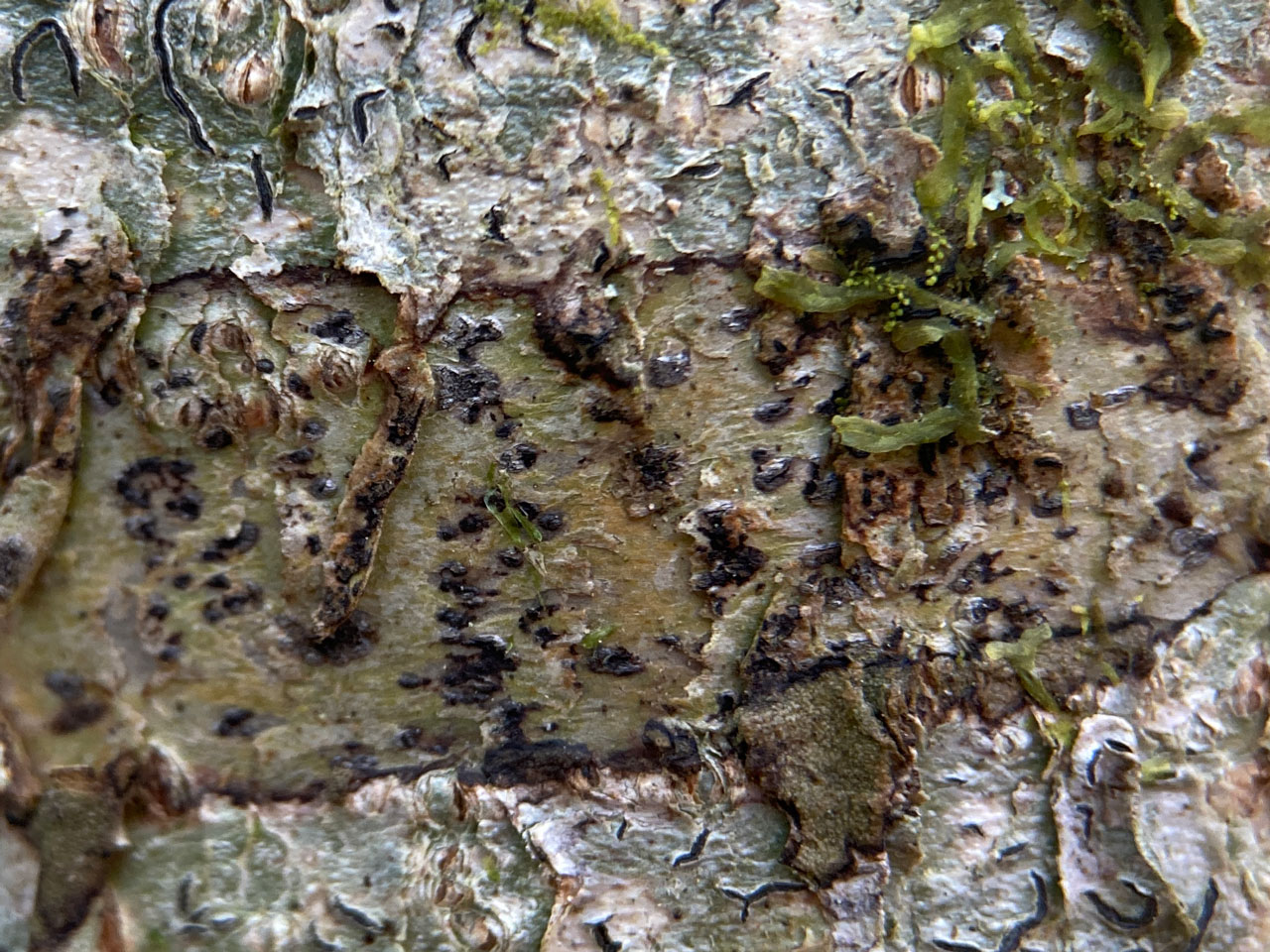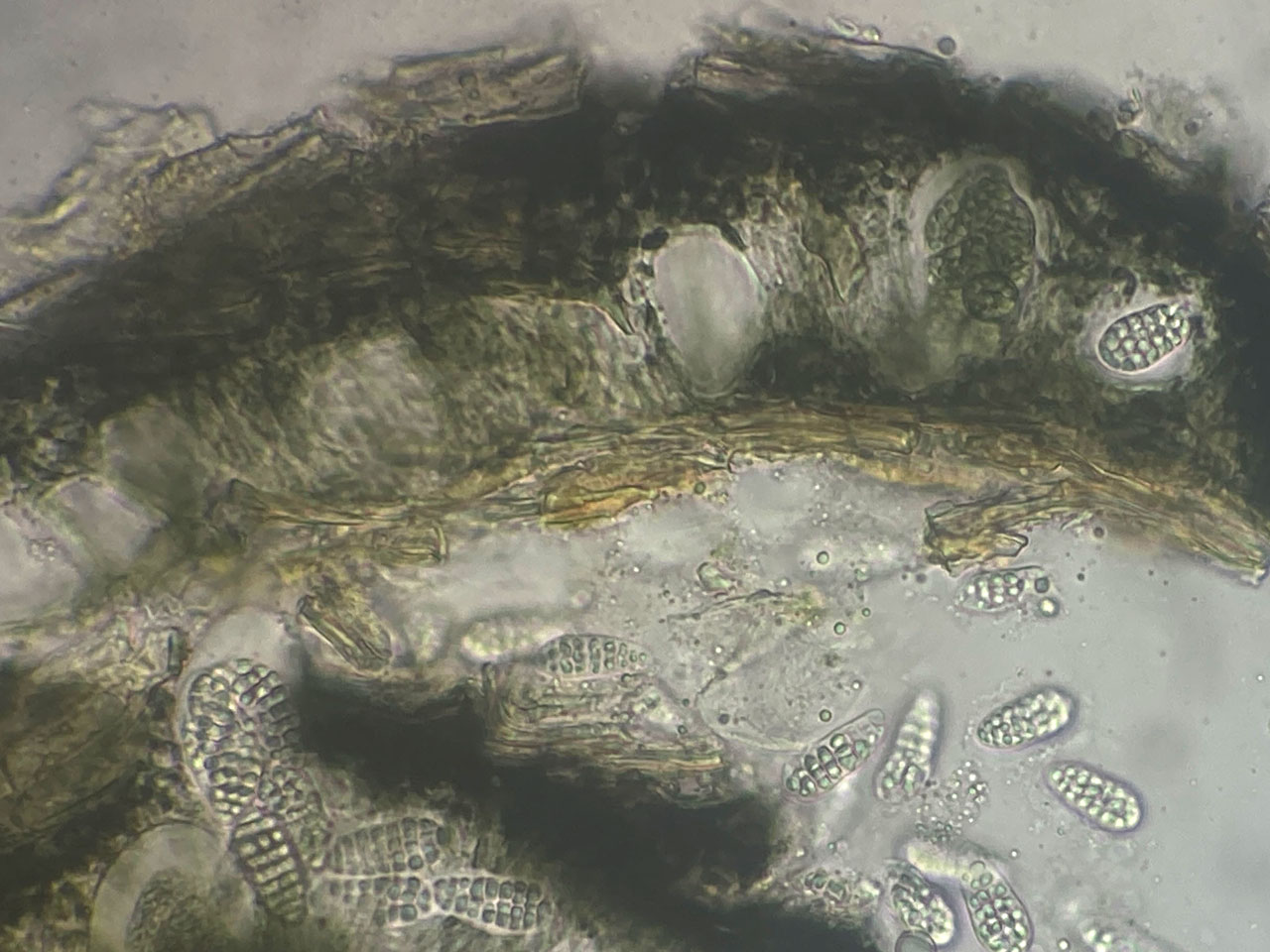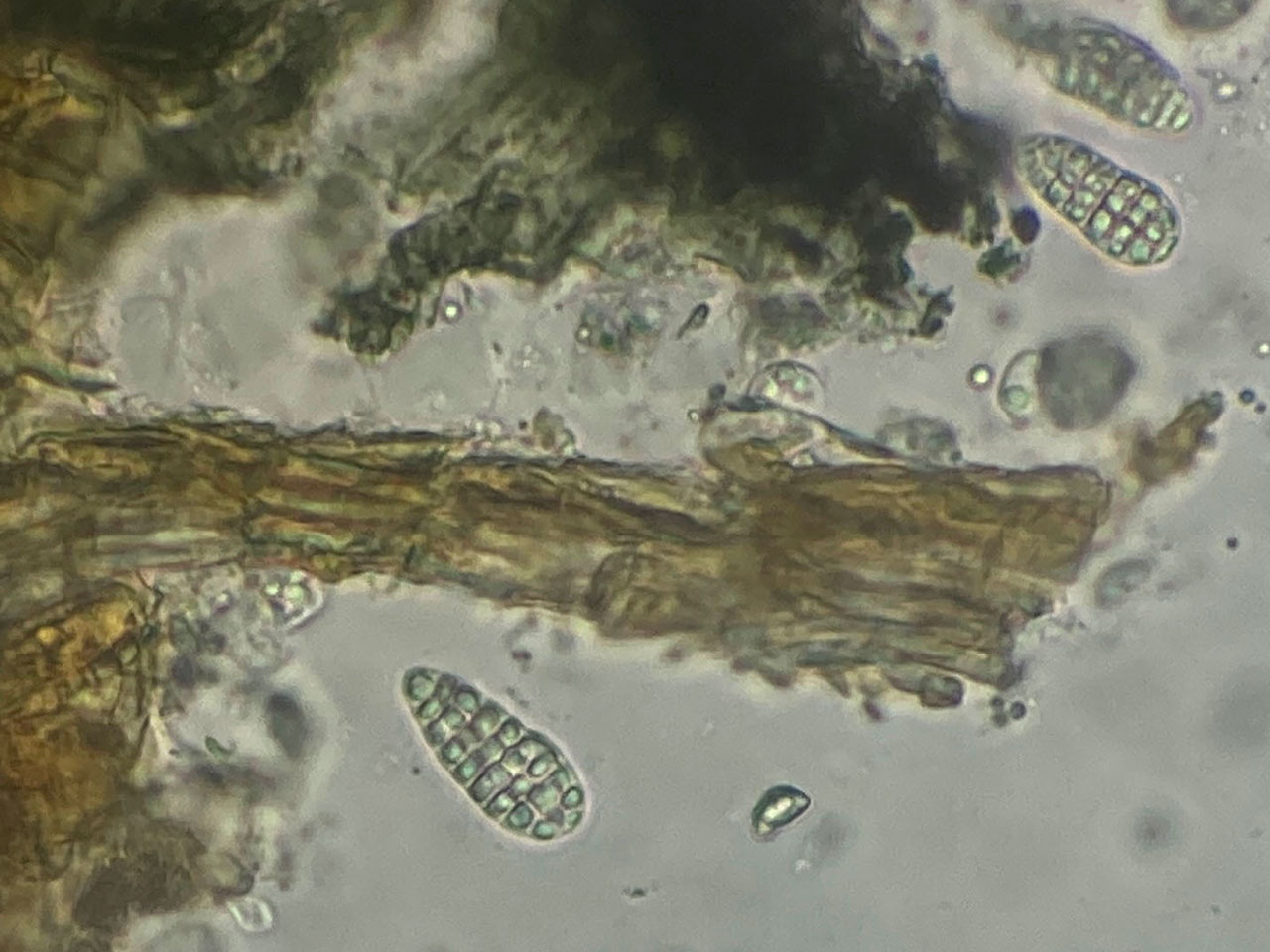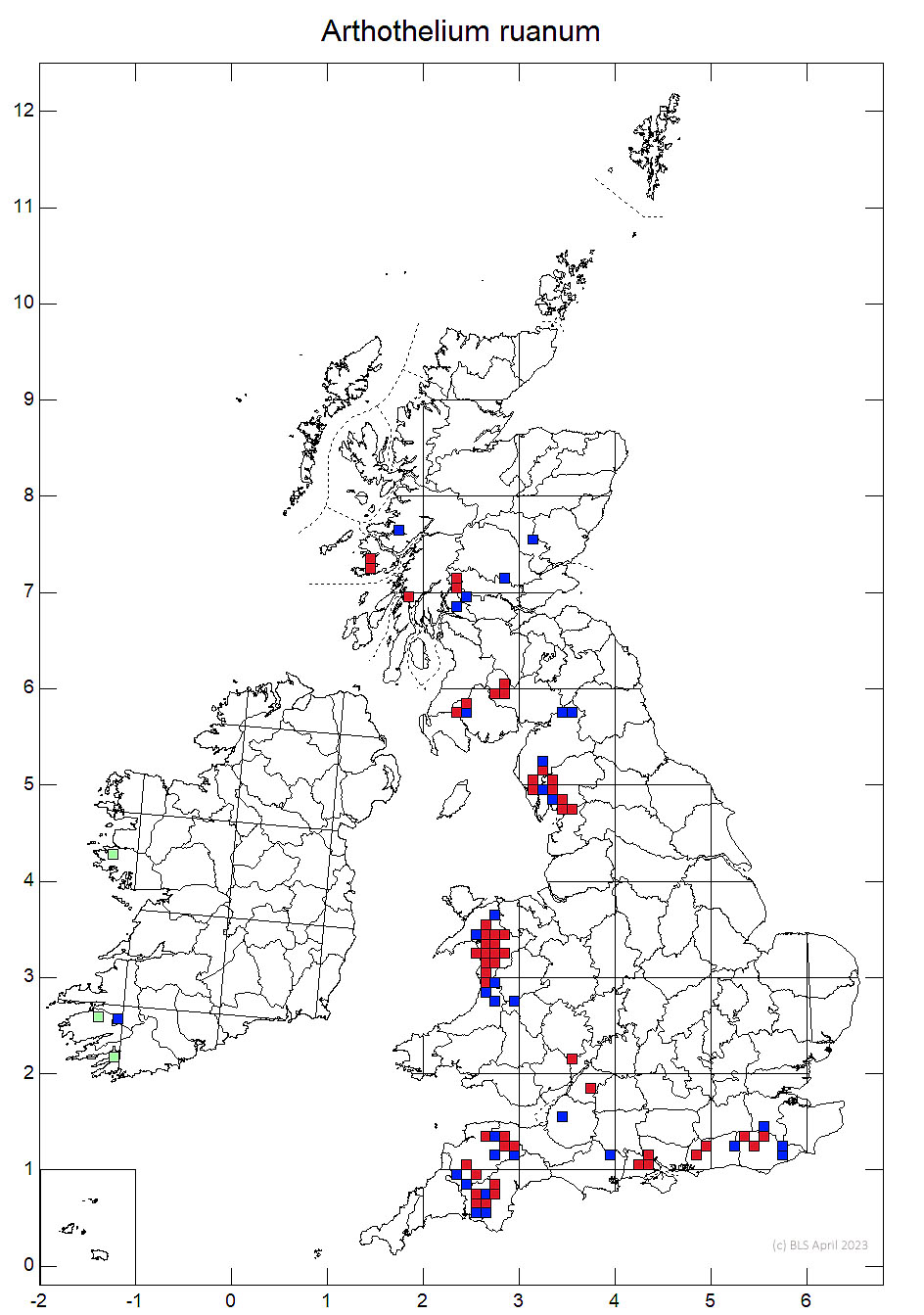Although it has a mainly western distribution in Britain, Arthothelium ruanum is an oceanic to sub-oceanic species in Europe. Its absence from eastern England is probably due to past pollution and intensive woodland management. It does appear to be recolonising in the south in response to reduced acidifying pollution and aging former Hazel coppice providing more habitat. Easy to confuse with species such as Arthonia ilicina, but the muriform spores distinguish it from most look a likes.
Thallus immersed, effuse or delimited by a brown line, creamy white, pale grey, brown-grey or olive-grey; photobiont trentepohlioid. Apothecia to 1.6 (–2) mm diam., irregularly rounded to bluntly stellate, often disintegrating in places and regenerating to give the appearance of a crowded swarm of punctiform apothecia, black, not pruinose (but often long remaining covered by bark cells), in section 70–95 µm tall; epithecium dark red-brown, K+ green; hymenium 35–50 µm tall, colourless or pale brown (K+ greenish); hypothecium 10–30 µm tall, dark red-brown, K+ dark green; paraphysoids 1–1.5 diam., numerous, the apices obscured by dense pigment. Ascospores (15–) 17–24 (–26) × 7–9.5 (–10.5) µm, obovoid-cylindrical, muriform, with 5–8 transverse septa and (2–) 3 to 7 transverse cells with 1 to 3 longitudinal septa, when old brown and warted. Pycnidia 60–80 µm diam., scarce, the wall red-brown, K+ green; conidia 4–6 × ca
1 µm, bacilliform.
Some forms with pale thalli are easily confused Arthonia ilicina in the field, but this lichen has much larger non-muriform spores. Typical material, especially when on Hazel, has a browner thallus with remnants of the bark epidermis remaining over young apothecia a distinctive feature not seen in Arthonia ilicina.
There are some enigmatic specimens from S.W. Ireland which have larger ascospores, 20–31 × 9.5–11.5 µm, with 6–9 (–10) tranverse septa, earlier mentioned by Coppins & James (1979).
On smooth bark (Hazel, Sweet Chestnut, Ash & Rowan), usually by streams in sheltered woodland.
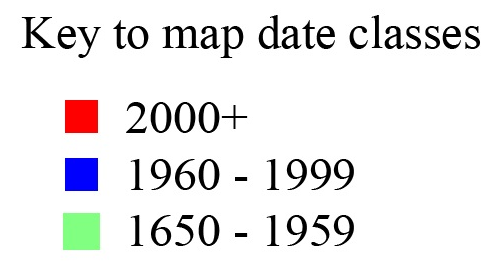
Rare, though locally frequent. Found patchily in parts of NW Wales. S. E. England, S. W. England, W. England (Lake District), Wales, Scotland (north to Mull and E. Perthshire), very rare in S. Ireland.
Very patchily distributed and rare in some areas but very locally frequent in other areas. With an oceanic distribution in Britain but actually characteristically sub-oceanic in Europe more widely. Possibly once more widespread in Britain but reduced in distribution by intensive coppicing and air pollution. Recent finds of isolated occurrences suggest recovery, and possibly spread, as abandoned formerly coppiced stands age.
Britain: Notable
Cannon, P., Ertz, D., Frisch, A., Aptroot, A., Chambers, S., Coppins, B. J., Sanderson, N. A., Simkin, J. & Wolseley, P. (2020) Revisions of British and Irish Lichens Volume 1 August 2020 Arthoniales: Arthoniaceae.
Coppins, B.J. & James, P.W. (1979). New or interesting British lichens III. Lichenologist 11: 27-45.
Text by Neil A Sanderson, based on Cannon et al (2020)
